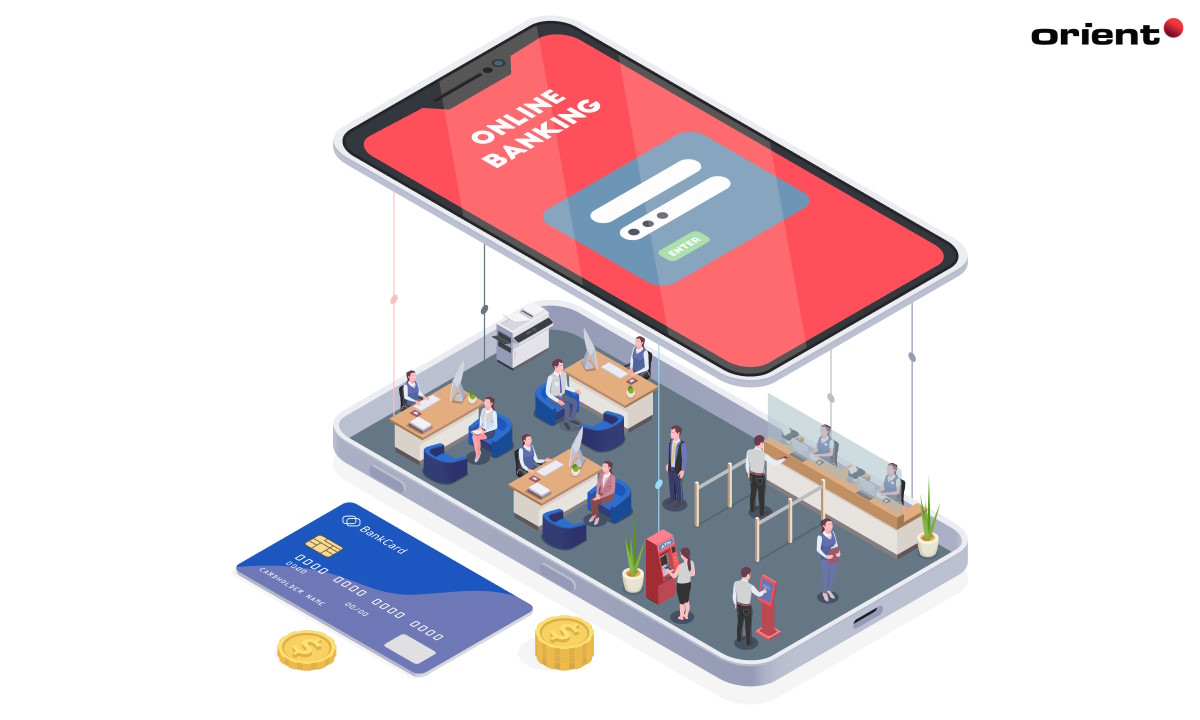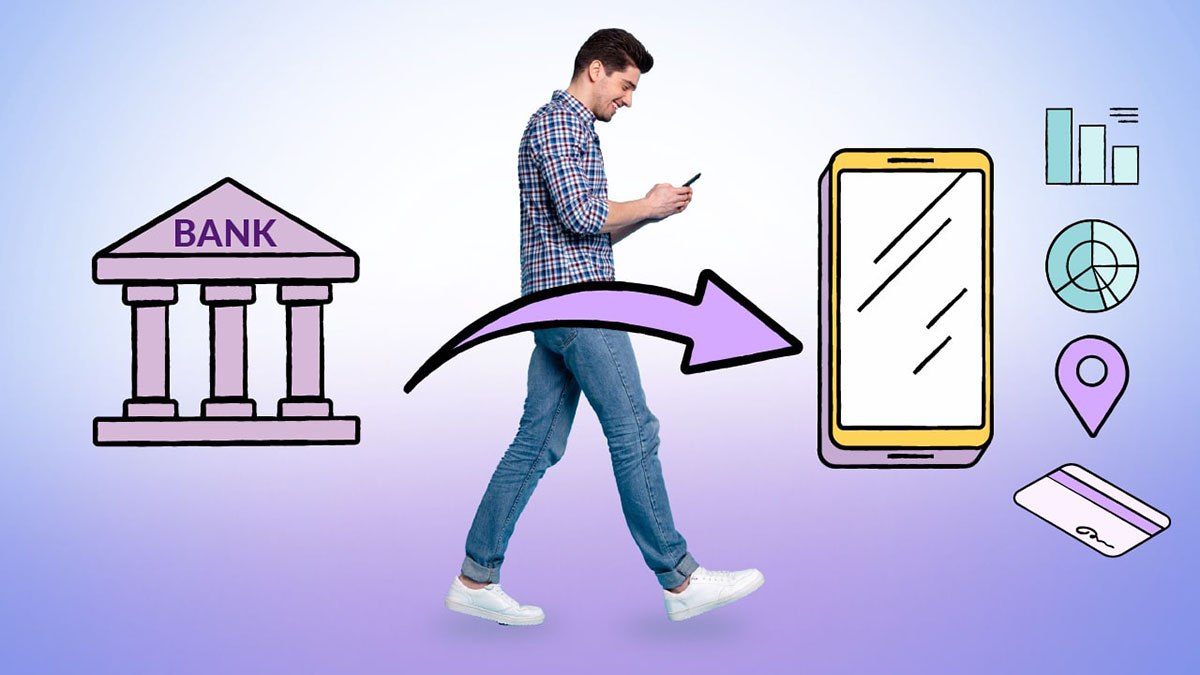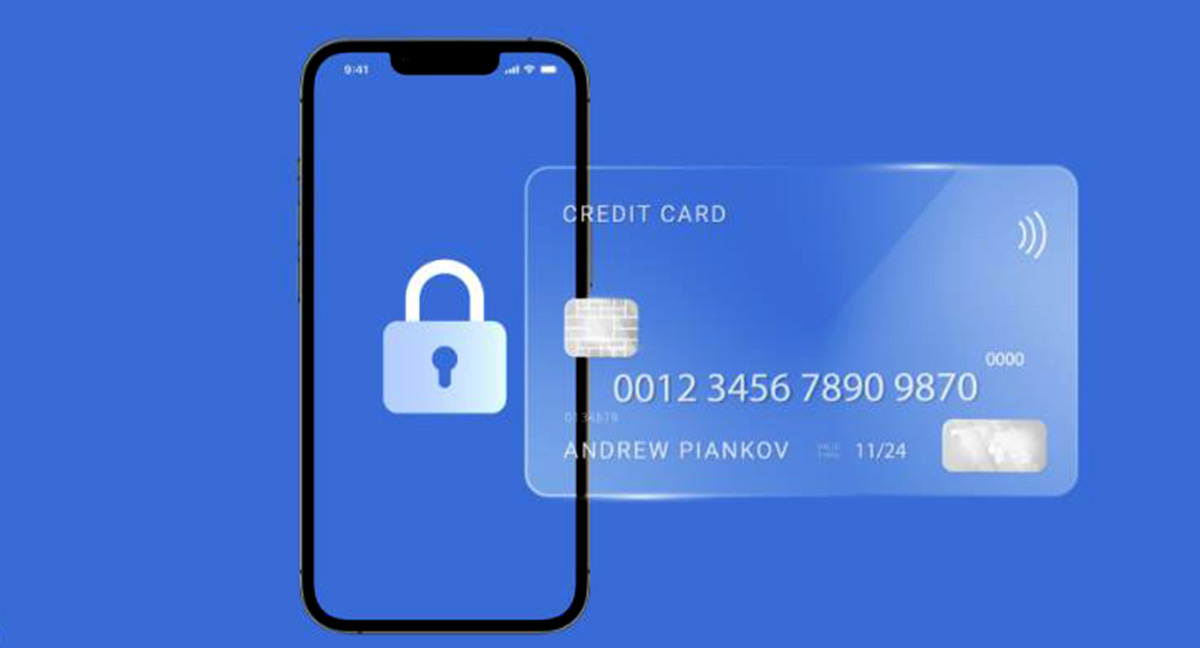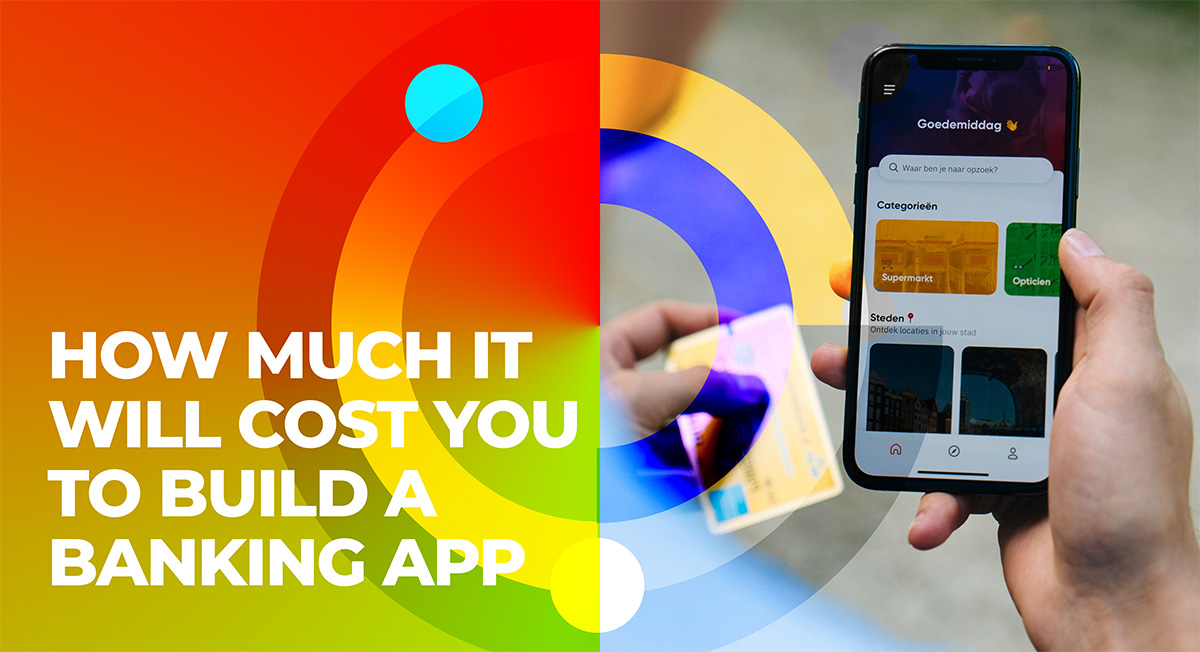

Finance
How To Build Mobile Banking Application
Modified: December 30, 2023
Learn how to build a mobile banking application in the finance industry. Explore key features, user experience, and security measures for a successful finance application.
(Many of the links in this article redirect to a specific reviewed product. Your purchase of these products through affiliate links helps to generate commission for LiveWell, at no extra cost. Learn more)
Table of Contents
Introduction
In today’s digital era, mobile banking applications have become an essential tool for modern-day banking. With the advent of smartphones and increased connectivity, people can now easily manage their finances on the go, making transactions, checking balances, and accessing a wide range of banking services right at their fingertips. Building a mobile banking application not only provides convenience to customers but also presents an opportunity for financial institutions to offer personalized and efficient services, attracting and retaining customers in a highly competitive industry.
However, developing a successful mobile banking application requires careful planning, execution, and adherence to industry standards and regulations. This article will outline the key steps and considerations involved in building a mobile banking application, providing a comprehensive guide for financial institutions and development teams.
Research and Planning is the first crucial step in building a mobile banking application. Thorough market research helps identify user expectations, existing competitor apps, and emerging trends. It is essential to evaluate user needs and preferences to ensure the application’s success. Planning the project scope, goals, and timelines is also crucial to ensure a smooth development process.
Identifying Key Features is the next step, where financial institutions must determine the core functionalities their application will offer. Features such as account management, fund transfers, bill payments, card services, and customer support must be carefully considered. Additionally, integrating innovative features like biometric authentication, budget management tools, and personalized recommendations can help enhance the user experience and differentiate the app from competitors.
Design and User Experience play a vital role in attracting and engaging users. A well-designed and intuitive interface with a seamless navigation flow is crucial to providing a positive user experience. Design elements including colors, typography, and icons should align with the brand identity while ensuring readability and clarity. Utilizing user-centric design principles and conducting usability testing can help refine the app’s interface and improve overall user satisfaction.
Backend Development involves building the server-side infrastructure that supports the mobile banking application. This includes developing an efficient and secure database management system, implementing APIs for seamless integration with external systems, and ensuring high performance and scalability to handle increasing user demand. It is essential to prioritize data security and adhere to industry-standard encryption and authentication protocols.
Research and Planning
The first step in building a successful mobile banking application is conducting thorough research and developing a comprehensive plan. This phase involves understanding user requirements, analyzing market trends, and outlining the project scope and objectives.
Market Research: Begin by conducting market research to gain insights into user expectations and behavior. Identify the target audience for the mobile banking application and analyze their preferences, pain points, and habits. Study existing mobile banking applications to understand their strengths and weaknesses. This research will help you identify opportunities for differentiation and innovation.
User Requirements: Gather user requirements through surveys, interviews, and focus groups. Understand their needs, expectations, and pain points in managing their finances through a mobile application. This data will be invaluable in designing a user-centric application that meets the needs of the target audience.
Competitor Analysis: Analyze the strengths and weaknesses of existing mobile banking applications in your market. Look for gaps and opportunities where your application can differentiate itself. Pay close attention to the user experience, features, security measures, and customer support offered by your competitors. This analysis will guide you in developing a unique value proposition for your application.
Project Scope and Objectives: Define the scope of your mobile banking application project. Determine the key features and functionalities it will offer. Consider both the must-have features (account management, fund transfers, etc.) and the nice-to-have features (budgeting tools, investment tracking, etc.). Set clear and measurable objectives for the project to ensure focus and accountability.
Timeline and Resources: Develop a realistic timeline for the project, taking into account the complexity of development, testing, and deployment processes. Assess the resources needed, including development team members, infrastructure, and budget. Ensure that the allocated resources align with the project’s objectives and timeline.
Regulatory Compliance: Ensure compliance with financial regulations and industry standards, such as data protection and privacy regulations. Familiarize yourself with the legal requirements involved in handling financial transactions and personal information. Compliance with these regulations is crucial for user trust and protects both your institution and users from potential risks.
By conducting thorough research and careful planning, you can lay a solid foundation for your mobile banking application’s development. Understanding user needs, market trends, and regulatory requirements will help you define clear objectives and develop a strategy to create a seamless and user-friendly mobile banking experience.
Identifying Key Features
Once the research and planning phase is complete, the next step in building a mobile banking application is identifying the key features it will offer. These features are crucial for meeting user needs, staying competitive in the market, and providing a seamless banking experience.
Account Management: One of the primary features of a mobile banking application is allowing users to manage their accounts. This includes viewing account balances, transaction history, and pending transactions. Users should be able to easily transfer funds between accounts, set up recurring payments, and manage account preferences conveniently.
Fund Transfers: Enabling hassle-free fund transfers is another essential feature. Users should be able to send money to other individuals or external accounts, either within the same institution or across different banks. The ability to initiate instant transfers, schedule future transfers, and save payees for easier access enhances the user experience.
Bill Payments: Integrating bill payment functionality allows users to pay their bills directly from the mobile banking application. This feature streamlines the process, reducing the need to log in to different payment platforms or make manual payments. Offering features like bill reminders, automatic bill payment options, and bill payment history can further enhance the convenience factor.
Card Services: Integrating card services enables users to manage and control their debit or credit cards through the app. This includes functionalities like activating or deactivating cards, setting spending limits, tracking transactions, and reporting lost or stolen cards. Mobile banking applications can also provide reward tracking and redemption options for customers enrolled in card-based loyalty programs.
Customer Support: Including customer support features within the mobile banking application can significantly enhance user satisfaction. Users should have access to a comprehensive FAQ section, live chat support, or the ability to contact customer service directly. Providing a secure messaging system within the app where users can communicate securely with banking representatives is also beneficial.
Personal Finance Management: Many users expect modern mobile banking applications to go beyond basic banking features. Including personal finance management tools, such as budget trackers, spending analysis, and savings goals, can help users better manage their financial health. Providing personalized recommendations based on spending habits and financial goals can also add value to the application.
Security: Security measures are paramount in mobile banking applications. Implementing two-factor authentication, biometric authentication (such as fingerprint or facial recognition), and encryption protocols ensures the protection of user data and transactions. Regular security audits and vulnerability assessments should be conducted to maintain a high level of security.
By identifying and incorporating these key features into your mobile banking application, you can provide users with a comprehensive and user-friendly banking experience. Regularly assess user feedback and market trends to evolve and update these features to stay ahead of the competition and meet the changing needs of your customers.
Design and User Experience
Design and user experience play a crucial role in the success of a mobile banking application. A visually appealing and intuitive interface coupled with seamless navigation can enhance user satisfaction, increase engagement, and build trust with your users. Here are some key considerations when designing the look and feel of your mobile banking application.
Brand Identity: Ensure the design elements, including the color scheme, typography, and graphics, align with your brand’s identity. Consistency in branding helps reinforce your institution’s image and builds trust with users. Use colors and typography that are easy to read and create a visual hierarchy to guide users’ attention to the most important elements.
Simple and Intuitive Navigation: Design your application with a user-first approach, prioritizing ease of use and intuitive navigation. Ensure that important features and functionalities are easily accessible and prominently displayed. Utilize clear icons, labels, and menus to help users easily find what they’re looking for. Incorporate a logical flow and minimize the number of steps required to complete common tasks.
Responsive Design: Given the variety of mobile devices and screen sizes, it’s crucial to design your application responsively. Ensure that the layout and elements adjust seamlessly to different screen sizes, providing a consistent user experience across devices. Test your application on various devices and screen sizes to ensure optimal performance and usability.
Accessibility: Make your mobile banking application accessible to a wide range of users, including those with disabilities. Implement accessibility features such as adjustable font sizes, high contrast options, and screen reader compatibility. Adhering to accessibility guidelines ensures equal access to your application for all users.
Transaction Flow: Pay close attention to the user journey during transactions. Design a clear and transparent flow that guides users through the process step by step. Provide real-time feedback and confirmation messages to inform users of successful transactions or any errors they need to address. Include the option for users to review and verify their transaction details before finalizing it.
Usability Testing: Conduct regular usability testing with real users to gain valuable insights into the app’s usability and identify areas for improvement. Observe how users interact with the application, collect feedback, and make necessary adjustments to optimize the user experience. Usability testing can help uncover issues, confusion points, and opportunities for enhancing the user interface.
Performance Optimization: Ensure your mobile banking application is fast and responsive. Minimize load times and optimize the app’s performance to deliver a seamless experience. Regularly monitor and analyze the app’s performance metrics to identify any bottlenecks and address them promptly.
Designing a mobile banking application that is visually appealing, intuitive to navigate, and optimized for performance is crucial to providing an exceptional user experience. By considering the principles of design, incorporating user feedback, and continuously improving the app’s usability, you can create a mobile banking application that users will find engaging, efficient, and trustworthy.
Backend Development
Backend development is a critical component in building a reliable and secure mobile banking application. It involves the creation of the server-side infrastructure that handles data management, integration with external systems, and ensures the application performs optimally. Here are some key aspects to consider during the backend development phase.
Database Management: Establishing a robust and secure database management system is essential for storing and managing user data. Choose a database solution that can handle high volumes of transactions and provide efficient data retrieval. Implement proper data normalization techniques to ensure data integrity and minimize redundancy. Regularly back up the database to prevent data loss and perform routine maintenance to optimize performance.
API Integration: Mobile banking applications often require integration with various external systems, such as payment gateways, third-party services, and financial institutions’ backend systems. Develop well-documented APIs that allow seamless communication between these systems and ensure data accuracy and security. Implement API security measures, such as token-based authentication and encryption, to protect sensitive data during transit.
Security Measures: Data security is paramount in a mobile banking application. Implement strong security protocols to protect user information, including encryption of sensitive data, secure authentication mechanisms, and secure transmission of data over the network. Conduct regular security audits, vulnerability assessments, and penetration testing to identify and address any potential vulnerabilities.
Scalability and Performance: Ensure your backend infrastructure is designed to handle high volumes of user traffic and transactions. Optimize database queries, adopt caching mechanisms, and implement load balancing techniques to ensure the application performs well under heavy loads. Monitor performance metrics, such as response times and server resource utilization, and optimize the system as needed to deliver a seamless user experience.
Compliance with Regulations: Mobile banking applications must comply with various financial regulations, such as data protection and privacy laws. Familiarize yourself with the regulatory requirements governing the handling of financial transactions and user data. Incorporate measures to ensure compliance, such as data encryption, secure data storage, and audit logs for tracking user actions.
Monitoring and Logging: Implement robust monitoring and logging systems to track application performance, identify anomalies, and assist in troubleshooting. Monitor key metrics, such as server uptime, response times, and error rates, to ensure the application’s stability. Collect detailed logs to track user activities, system events, and potential security incidents for auditing and analysis purposes.
Documentation and Collaboration: Develop comprehensive documentation for the backend infrastructure, including API documentation, database schema, and system architecture. This documentation assists in maintenance, troubleshooting, and future enhancements. Foster collaboration between backend developers and other teams involved in the mobile banking application’s development to ensure effective integration and cohesive functionality.
By paying careful attention to these considerations during the backend development phase, you can create a robust and secure foundation for your mobile banking application. Prioritize data security, scalability, and compliance to build a backend infrastructure that can support the application’s functionality, handle user traffic, and ensure a smooth and reliable user experience.
Integrating APIs and Security
Integrating APIs and implementing robust security measures are critical steps in building a secure and efficient mobile banking application. APIs enable seamless communication between different systems, while security measures protect user data and transactions. Here are some key considerations when integrating APIs and ensuring security in your mobile banking application.
API Integration: APIs allow your mobile banking application to interact with external systems such as payment gateways, credit bureaus, and third-party services. Work closely with these providers to ensure smooth integration and establish secure communication protocols. Adhere to industry best practices and standards when implementing API integrations to maintain data integrity and security.
Authentication and Authorization: Implement strong authentication and authorization mechanisms to ensure only authorized individuals can access the mobile banking application and perform transactions. Use secure authentication protocols such as token-based authentication or OAuth, and enforce multi-factor authentication for added security. Set granular authorization levels to control access to sensitive data and functionality within the application.
Encryption: Protect user data and transactions by implementing encryption techniques. Implement Secure Socket Layer (SSL) or Transport Layer Security (TLS) protocols to encrypt data transmitted between the mobile application and the server. Additionally, consider implementing encryption for sensitive data at rest in the database to prevent unauthorized access in the event of a breach.
Threat Detection and Prevention: Implement robust security measures to detect and prevent common threats such as authentication attacks, SQL injection, cross-site scripting (XSS), and cross-site request forgery (CSRF). Utilize intrusion detection and prevention systems (IDS/IPS), web application firewalls (WAFs), and regularly update security patches and libraries to protect against known vulnerabilities.
Input Validation: Validate and sanitize all inputs from users to prevent malicious code injections and protect against common security vulnerabilities. Implement server-side validation to ensure that only valid and intended data is processed and stored in the application’s backend systems.
Logging and Auditing: Implement comprehensive logging mechanisms to capture and store relevant security events, system activities, and user actions. Log events such as failed login attempts, transaction activities, and security-related incidents to facilitate auditing and forensic analysis in case of security breaches or fraudulent activities.
Compliance and Regulatory Requirements: Ensure compliance with applicable financial regulations and data protection laws. Understand the legal obligations regarding the handling of user data, storage of financial information, and reporting requirements. Incorporate features such as data anonymization, data retention policies, and user consent management to align with these regulations.
Continuous Security Testing: Regularly conduct security assessments and penetration testing to identify vulnerabilities and simulate potential attacks. Engage third-party security experts to evaluate the application’s security posture and recommend improvements. Stay up-to-date with security best practices and emerging threats to proactively mitigate security risks.
By prioritizing the integration of APIs and implementing robust security measures, you can ensure the confidentiality, integrity, and availability of user data and transactions within your mobile banking application. Regularly monitor and update security measures to address new threats and vulnerabilities, and keep user trust and confidence intact while delivering a seamless banking experience.
Testing and Quality Assurance
Testing and quality assurance are crucial steps in the development of a mobile banking application. Thorough testing ensures that the application functions as intended, performs well under various scenarios, and meets the expectations of the users. Here are some key considerations when conducting testing and quality assurance.
Test Planning: Develop a comprehensive test plan that includes different types of testing such as functional testing, user interface (UI) testing, performance testing, security testing, and compatibility testing. Define the scope and objectives of each test, identify test scenarios, and allocate appropriate resources for testing.
Functional Testing: Test the application’s features and functionalities to ensure they work as intended. Verify that users can perform common tasks such as account management, fund transfers, bill payments, and card services without errors or glitches. Conduct both positive and negative testing to cover different scenarios and validate the application’s behavior.
User Interface (UI) Testing: Test the user interface to ensure it is intuitive, user-friendly, and visually appealing. Evaluate the consistency of design elements, verify that buttons and links function as expected, and assess the overall usability of the application. Test the application on different devices and screen sizes to ensure a responsive and consistent user experience.
Performance Testing: Assess the application’s performance under various load conditions. Test its response time, handling of concurrent users, and ability to handle high transaction volumes. Identify and address any performance bottlenecks to ensure the application can handle the expected user traffic without slowdowns or crashes.
Security Testing: Conduct thorough security testing to identify and address vulnerabilities that may compromise the application’s security. Perform penetration testing to simulate real-world attacks and attempt to exploit weaknesses in the system. Test authentication mechanisms, encryption protocols, and application vulnerabilities to ensure the application can withstand potential threats.
Compatibility Testing: Test the application on different devices, operating systems, and web browsers to ensure compatibility and responsiveness across platforms. Evaluate how the application adapts to different screen sizes and resolutions, ensuring consistent functionality and usability across devices.
Usability Testing: Conduct usability testing with real users to assess the application’s usability and gather feedback. Observe how users interact with the application, identify pain points, and make necessary improvements to enhance the user experience. Incorporate user feedback into iterative development cycles to continually refine and improve the application.
Bug Reporting and Tracking: Establish a system to report and track bugs and issues uncovered during testing. Ensure that bugs are categorized, prioritized, and addressed in a timely manner. Implement a feedback loop between testers, developers, and QA teams to communicate issues and track their resolution.
Regression Testing: Perform regression testing to ensure that new updates or changes to the application do not introduce new defects or break existing functionality. Re-test previously validated features to verify their continued functionality and integration with new updates.
By conducting thorough testing and quality assurance, you can ensure that your mobile banking application meets high standards of functionality, usability, security, and performance. A well-tested and quality-assured application enhances user satisfaction, builds trust, and establishes your institution as a reliable and customer-centric financial service provider.
Deployment and Launch
Deployment and launch are critical stages in the development of a mobile banking application, as they involve making the application available to users and ensuring its smooth transition from development to production. Here are some key considerations when deploying and launching your mobile banking application.
Infrastructure Setup: Prepare the necessary infrastructure to host and run your mobile banking application. Set up servers, databases, and other required resources in a secure and scalable environment. Ensure the infrastructure meets performance and security requirements to handle the anticipated user load.
Environment Configuration: Set up different environments, such as development, testing, and production, to manage the application’s lifecycle. Maintain separation between these environments to prevent any unintended impacts on the live production system. Conduct thorough testing in the staging environment to verify the application’s functionality and compatibility before deploying to the production environment.
Continuous Integration and Deployment: Implement a continuous integration and deployment process to streamline code integration, testing, and deployment. Automate the build and deployment process, ensuring that changes are smoothly propagated from development to production. Continuous integration helps catch and resolve issues early in the development cycle, reducing the risk of deployment-related errors.
Data Migration: If migrating from an existing banking system or replacing an older application, develop a data migration plan to transfer user data securely and accurately. Conduct extensive testing to ensure data integrity and consistency during the migration process. Validate and verify the migrated data to ensure it aligns with the requirements of the new application.
Monitoring and Error Handling: Implement robust monitoring tools and error handling mechanisms to track and manage system performance, errors, and exceptions. Monitor key metrics such as server uptime, response times, and application usage. Set up logging and notifications to promptly address any issues that may arise during deployment or after the application is live.
User Communication: Communicate the launch of the mobile banking application to your users effectively. Provide clear and concise information about the new features, enhancements, and benefits they can expect. Consider conducting training sessions or workshops to familiarize users with the new application and its functionalities.
User Support: Establish a support system to assist users with any questions or issues they may encounter during the initial stages of using the application. Provide user documentation, FAQs, and help center resources to guide users through using the application effectively. Offer multiple channels of support, including phone, email, chat, and in-app messaging, to address user queries or concerns promptly.
Post-Launch Evaluation: Continuously monitor and evaluate the application’s performance and user feedback after the launch. Gather user feedback to identify areas for improvement and address any bugs or usability issues. Make regular updates to enhance the application’s features and functionalities based on user needs and emerging industry trends.
By carefully managing the deployment and launch of your mobile banking application, you can ensure a smooth and successful transition to the live environment. Effective infrastructure setup, environment configuration, data migration, continuous monitoring, and user support are crucial for a successful deployment and launch process. Regularly analyze user feedback and make necessary improvements to deliver a high-quality and user-friendly mobile banking experience.
Marketing and User Acquisition
Launching a mobile banking application is just the first step in capturing the attention and interest of potential users. A well-planned marketing strategy is essential to generate awareness, attract users, and acquire a strong user base. Here are some key considerations for marketing and user acquisition for your mobile banking application.
Target Audience Identification: Identify your target audience for the mobile banking application. Understand their demographics, financial needs, and preferences. Segment your audience based on factors such as age, income level, and financial goals. This will help you tailor your marketing efforts to effectively reach your intended users.
Brand Building: Develop a compelling brand identity for your mobile banking application. Invest in creating a unique and memorable brand logo, colors, and messaging to differentiate yourself from competitors. Consistently communicate your brand values and benefits through various marketing channels to create a strong brand presence.
Content Marketing: Share informative and engaging content that showcases the benefits and features of your mobile banking application. Create blog posts, articles, videos, and infographics that address common financial challenges or provide financial tips. Distribute this content through your website, social media platforms, and email newsletters to attract and educate potential users.
Social Media Marketing: Leverage social media platforms to reach and engage with your target audience. Create engaging social media profiles and share relevant content, updates, and offers. Utilize targeted advertising options to reach specific user segments, and encourage users to share their positive experiences with your mobile banking application through reviews and testimonials.
Incentives and Referral Programs: Attract new users by offering incentives and referral programs. Provide sign-up bonuses, rewards for completing certain actions, or exclusive offers to incentivize users to download and register for your mobile banking application. Implement a referral program that rewards users who refer their friends and family, creating a viral effect and expanding your user base.
App Store Optimization (ASO): Optimize your mobile banking application’s presence in app stores to increase visibility and organic downloads. Conduct keyword research and include relevant keywords in your app’s title, description, and metadata. Use compelling screenshots and videos to showcase the app’s features and benefits. Encourage positive app reviews and respond promptly to user feedback.
Partnerships and Collaborations: Collaborate with complementary businesses or financial institutions to expand your reach and access new user segments. Explore partnerships for co-marketing campaigns, joint events, or cross-promotions. By leveraging existing relationships and networks, you can enhance brand exposure and increase user acquisition opportunities.
User Engagement and Retention: Implement strategies to engage and retain users once they download and start using your mobile banking application. Foster a seamless onboarding experience, provide excellent customer support, and offer personalized features based on user preferences and behaviors. Regularly communicate with users through in-app messaging, push notifications, and personalized offers to keep them engaged and encourage long-term usage.
Measure and Analyze: Continuously monitor and analyze key metrics to evaluate the effectiveness of your marketing efforts and user acquisition strategies. Track app downloads, user engagement, conversion rates, and user retention to gain insights into what is working well and where improvements can be made. Utilize analytics tools to gather data and make data-driven decisions to optimize your marketing campaigns.
By implementing targeted marketing strategies and employing user acquisition techniques, you can successfully promote your mobile banking application, attract a significant user base, and establish a strong market presence. Regularly evaluate and refine your marketing efforts to stay ahead of the competition and continually grow your user base.
Maintenance and Updates
Maintaining and regularly updating your mobile banking application is crucial to ensure its optimal performance, security, and functionality. Continuous improvement and addressing user feedback are essential for providing a seamless and user-friendly banking experience. Here are some key considerations for maintaining and updating your mobile banking application.
Ongoing Support: Establish a dedicated support team to promptly address user inquiries, issues, and feedback. Provide multiple channels for users to reach out for support, including phone, email, live chat, and in-app messaging. Respond and resolve user concerns in a timely and efficient manner to ensure a positive user experience.
Regular Bug Fixes: Continuously monitor and address any bugs or glitches that arise in the application. Regularly test, diagnose, and fix issues to improve the stability and reliability of the app. Employ an agile development approach to quickly identify and resolve bugs, releasing regular updates to address user-reported issues promptly.
Security Updates: Stay vigilant about emerging security threats and promptly release security updates to protect user data and prevent potential breaches. Regularly assess and address vulnerabilities, conduct security audits, and implement security best practices to keep your mobile banking application secure. Stay up-to-date with industry security standards and regulations to ensure ongoing compliance.
Performance Optimization: Regularly evaluate and optimize the performance of your mobile banking application. Monitor key metrics such as response times, server uptime, and resource utilization. Identify and address any bottlenecks or performance issues to ensure a smooth and efficient user experience. Continuously optimize code, database queries, and network communication to improve performance.
Feature Enhancements: Continuously gather user feedback and evaluate market trends to identify opportunities for feature enhancements. Conduct user research, usability testing, and analysis of user behavior to prioritize new features or improvements. Release updates that add value to user experiences and align with user expectations. Regularly communicate with users about new features and improvements to keep them engaged.
Compatibility Updates: As mobile operating systems, platforms, and devices evolve, ensure that your mobile banking application remains compatible. Regularly test and optimize the application’s compatibility with new operating system versions, screen sizes, and device models. Provide timely updates to address compatibility issues and ensure a seamless experience for users across different platforms and devices.
User Communication: Communicate regularly with users to keep them informed about updates, bug fixes, and new features. Utilize in-app messaging, email newsletters, social media, and notifications to notify users of important updates and improvements. Encourage users to provide feedback and suggestions for further improvements, fostering a sense of engagement and ownership in the application’s evolution.
Version Control and Documentation: Implement version control to track changes, manage different versions of the application, and roll back if necessary. Maintain detailed documentation of the application’s architecture, features, and updates to facilitate ongoing development, maintenance, and future enhancements. Keep the documentation up to date and easily accessible for your development and support teams.
User Acceptance Testing (UAT): Conduct periodic user acceptance testing to gather feedback and insights from real users. Allow a group of users to test new features, updates, or improvements before releasing them to the wider user base. Incorporate user feedback into the development process to ensure a user-centric approach and validate the effectiveness of updates and enhancements.
By prioritizing maintenance and regular updates, you can keep your mobile banking application secure, reliable, and user-friendly. Addressing bugs, enhancing features, optimizing performance, and communicating with users effectively contribute to a positive user experience and help build trust and loyalty among your user base.
Conclusion
Building a mobile banking application requires careful research, planning, and execution. By following the steps outlined in this article, including research and planning, identifying key features, designing a user-friendly interface, and integrating APIs and security, financial institutions can create a comprehensive and secure mobile banking application that meets the needs of their users.
The deployment and launch phase involves careful infrastructure setup, environment configuration, and ensuring a smooth transition from development to production. Effective marketing and user acquisition strategies help generate awareness, attract users, and build a strong user base. Ongoing maintenance, regular updates, and addressing user feedback are crucial for providing a seamless and user-friendly experience while ensuring security, performance, and compatibility with changing technologies.
By prioritizing user satisfaction, data security, and regulatory compliance, financial institutions can establish themselves as reliable and customer-centric service providers. A well-designed and feature-rich mobile banking application can enhance the banking experience for users, providing convenience, accessibility, and personalized financial management tools.
Continuous improvement, regular updates, and effective user communication are vital to meet evolving user expectations and compete in the dynamic financial services landscape. By fostering a user-centric approach and leveraging emerging technologies, financial institutions can deliver a mobile banking application that meets the needs of modern banking consumers and sets them apart from the competition.
In conclusion, the development and maintenance of a mobile banking application require a strategic and holistic approach. By following the steps and considerations outlined in this article, financial institutions can successfully create and maintain a mobile banking application that provides a seamless and secure banking experience, enhances user satisfaction, and builds long-term customer loyalty in an increasingly digital world.














